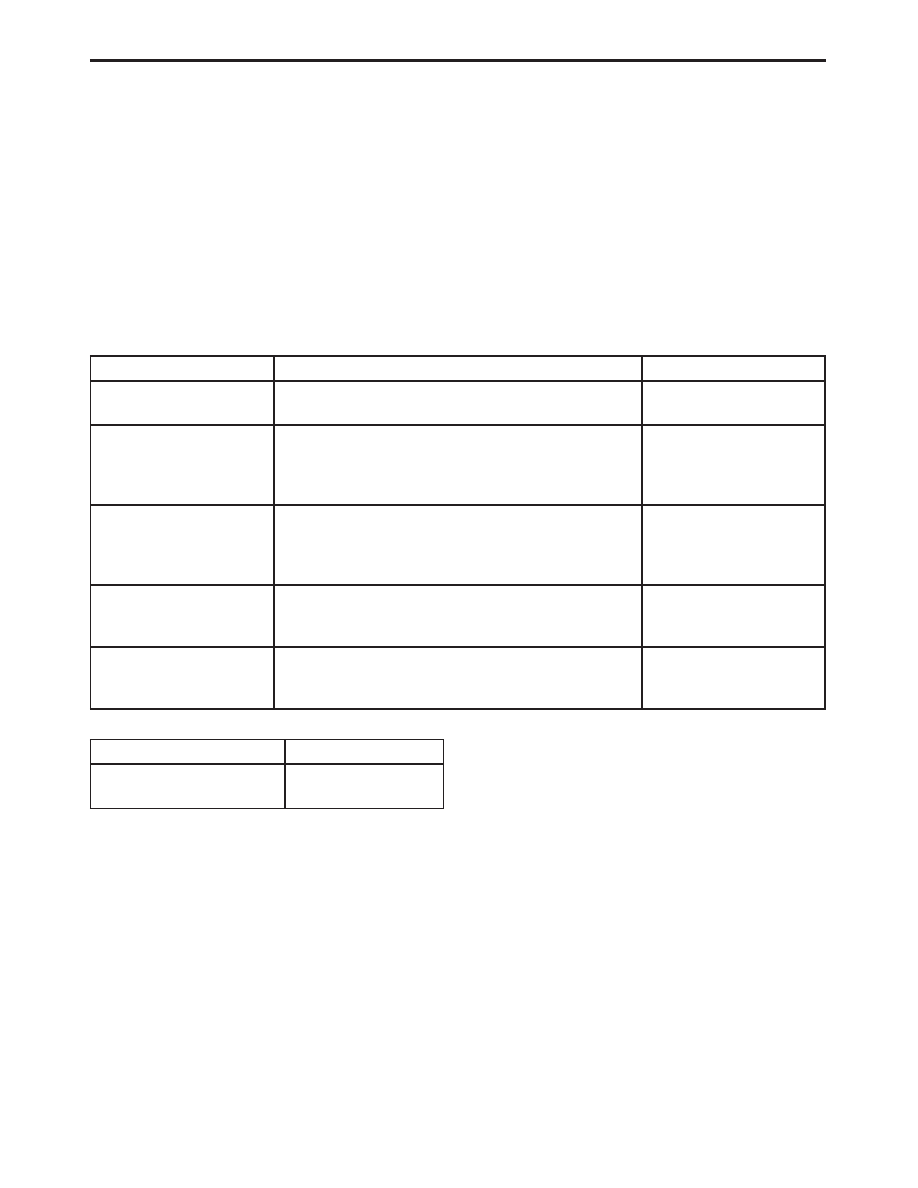Chrysler Sebring, Stratus sedan, Sebring Convertible. Manual - part 5

CAUTION: Deployed front airbags may or
may not have live pyrotechnic material within
the airbag inflator. Do not dispose of driver
and passenger airbags unless you are sure
of complete deployment. Please refer to the
hazardous substance control system for
proper disposal. Dispose of deployed airbags
in a manner consistent with state, provincial,
local,
and
federal
regulations.
Use
the
following table to identify the status of the
airbag squib.
PASSENGER AIRBAG SQUIB STATUS
(1) Using a DRBIII
t read Airbag DTC’s
If the following active codes are present:
ACTIVE DTC
CONDITIONS
SQUIB STATUS
Passenger Squib 1 open
Passenger Squib 2 open
Check the stored DTC’s AND IF the stored min-
utes for both are within 15 minutes of each other.
Both Passenger Squib 1
and 2 were used.
Passenger Squib 1 open
Passenger Squib 2 open
Check the stored DTC’s AND IF the stored min-
utes for Passenger Squib 2 open is GREATER
than the stored minutes for Passenger Squib 1 by
15 minutes or more.
Passenger Squib 1 was
used; Passenger Squib
2 is live.
Passenger Squib 1 open
Passenger Squib 2 open
Check the stored DTC’s AND IF the stored min-
utes for Passenger Squib 1 open is GREATER
than the stored minutes for Driver Squib 2 by 15
minutes or more.
Passenger Squib 1 is
live; Driver Squib 2
was used.
If Passenger Squib 1
open is an active code.
Check the stored DTC’s AND IF Passenger Squib
2 open is NOT an active code.
Passenger Squib 1 was
used; Passenger Squib
2 is live.
If Passenger Squib 2
open is an active code.
Check the stored DTC’s AND IF Passenger Squib
1 open is NOT an active code.
Passenger Squib 1 is
live; Passenger Squib 2
was used.
If neither of the following codes is an active code:
DTC
SQUIB STATUS
Passenger squib 1 open
Passenger squib 2 open
Status of Airbag is
Unknown.
3.1.4
SEAT BELT TENSIONER (SBT)
The JR41 4-door driver and front passenger seat
belt (retractor) tensioners are mounted to the in-
board side of the “B” pillar at the floor. The ten-
sioner is an integral part of the seat belt retractor.
The JR27 convertible driver and front passenger
seat belt (buckle) tensioners are mounted to the
inboard side of the front seats. The seat belt buckle
is connected directly to the seat belt tensioner cable.
At the onset of an impact event the ACM uses the
seat belt tensioner to rapidly retract the seat belt.
With the slack removed, the occupant’s forward
motion in an impact will be reduced as will the
likelihood of contacting interior components. The
seat belt tensioner cannot be repaired, if damaged
or defective it must be replaced. The ACM continu-
ously monitors the resistance of the seat belt ten-
sioner circuits an open or shorted conditions.
3.1.5
SIDE IMPACT SENSORS
The side impact sensors are electronic accelerom-
eters that sense the rate of vehicle deceleration.
Side impact sensors and the ACM Accelerometer
provides verification of the direction and severity of
a side impact to the ACM processor. The left side
impact sensor provides impact sensing for impacts
on the left side of the vehicle and the right side
impact sensor provides sensing for impacts on the
right side of the vehicle.
The side impact sensors receive battery current
and ground from he ACM through dedicated driver
and passenger sensor signal and ground circuits.
The ACM communicate with the Side Impact Sen-
sors by modulating the current in the sensor signal
circuit. Each sensor communicates the sensor sta-
tus as well as sensor fault information to the
microprocessor in the Airbag Control Module.
5
GENERAL INFORMATION